waterproofing shower-where does this layer go? and more questions!!
Gabby Springs
9 years ago
Featured Answer
Sort by:Oldest
Comments (40)
Creative Ceramic & Marble/ Bill Vincent
9 years agoGabby Springs
9 years agoRelated Discussions
Best way to waterproof seam between floor tile and shower pan
Comments (4)If you're looking to waterproof the floor, run the Ditra up to the shower pan, and cut it nice and uniform, leaving about an 1/8" gap, and then caulk it. Also, pick up a roll of Kerdiband to seal up the seams in the Ditra....See MoreMom's Curbless Steam Shower - one more question
Comments (1)I would put the diverter at the point-of-use, next to the showerheads....See MoreBuilding/waterproofing shower w/cement block exterior walls?
Comments (9)My husband spoke with the tile guy yesterday. He uses Lacticrete/epoxy grout which he felt was going to work as form of waterproofing in itself to keep water from penetrating behind tile--but is willing to use liquid waterproofing medium over the Durock. He also said that his bid did not include building the pan since the plumbers have to jack current slab and relocate drain from its current location (for the original tub) into middle of new floor space for shower...the plumbers are supposed to build the pan with preslope... he said they/plumbers would put in vinyl liner and a conventional drain....These two guys have done many projects together before and guess they know how the other operates. We didn't see anything in plumber's bid about building the shower pan so we have asked for clarification but no answer yet. I don't have problem using the waterproofing liquid over the pan vs vinyls liner...What is price difference in using Kerdi or Lacticrete drain over conventional? The tile guy told my husband that the vinyl liner should go up the shower sides about 10 inches and then be tucked behind the Durock....(if my husband heard right)... Is that approved practice? I thought there was supposed to be gap between those two surfaces that was filled with silicone--that they didn't touch...am I mistaken? In case they decide to go that route... Should/can the exposed ends of the Durock be waterproofed?...See MoreQuestions on shower waterproofing and grout
Comments (11)"They use Durock cement board..." Durock is an excellent choice. "...and recommend waterproofing on top of it as a “best practice,” but not required." Liquid waterproofing over the Durock is also an excellent construction detail. The waterproofing simply need to be installed in accordance with the manufacturer's installation instructions. I HIGHLY recommend findig out what they are going to use...then print out the installation instructions which are available online...and go over them with your person-of-contact. That is important. "From my reading, "no waterproofing required" seems to match the Durock installation specifications..." Remember, Durock is installed in all climates, warm, cold, transitional, etc. USG, the manufacturer of Durock, will tell you in the instructions HOW to hang Durock...fastener spacing, panel edge blocking, panel thickness versus stud spacing, etc...because for the most part, they want it installed the same way everywhere. But they WON'T specify waterproofing instructions because they'd have to update the instructions for numerous building locales in each and every one of those "everywhere" places. That's a responsibility no corporate legal office wants to take on....See MoreCreative Ceramic & Marble/ Bill Vincent
9 years agoGabby Springs
9 years agoVith
9 years agoGabby Springs
9 years agoGabby Springs
9 years agoGabby Springs
9 years agoGabby Springs
9 years agoCreative Ceramic & Marble/ Bill Vincent
9 years agoenduring
9 years agoGabby Springs
9 years agoenduring
9 years agoGabby Springs
9 years agocatbuilder
9 years agoGabby Springs
9 years agoCreative Ceramic & Marble/ Bill Vincent
9 years agoGabby Springs
9 years agoMongoCT
9 years agolast modified: 9 years agoMongoCT
9 years agoGabby Springs
9 years agolam702
9 years agoCreative Ceramic & Marble/ Bill Vincent
9 years agoGabby Springs
9 years agolam702
9 years agoGabby Springs
9 years agocatbuilder
9 years agolam702
9 years agoMongoCT
9 years agoweedyacres
9 years agoVith
9 years agoCreative Ceramic & Marble/ Bill Vincent
9 years agolast modified: 9 years agoMongoCT
9 years agolast modified: 9 years agoMongoCT
9 years agolast modified: 9 years agolam702
9 years agoenduring
9 years agolast modified: 9 years agoCreative Ceramic & Marble/ Bill Vincent
9 years agolast modified: 9 years agoBy Any Design Ltd.
9 years agoCreative Ceramic & Marble/ Bill Vincent
9 years ago
Related Stories

BATHROOM DESIGNConvert Your Tub Space Into a Shower — Waterproofing and Drainage
Step 4 in swapping your tub for a sleek new shower: Pick your waterproofing materials and drain, and don't forget to test
Full Story
FEEL-GOOD HOMEThe Question That Can Make You Love Your Home More
Change your relationship with your house for the better by focusing on the answer to something designers often ask
Full Story
REMODELING GUIDESWhere to Splurge, Where to Save in Your Remodel
Learn how to balance your budget and set priorities to get the home features you want with the least compromise
Full Story
INSIDE HOUZZHow Much Does a Remodel Cost, and How Long Does It Take?
The 2016 Houzz & Home survey asked 120,000 Houzzers about their renovation projects. Here’s what they said
Full Story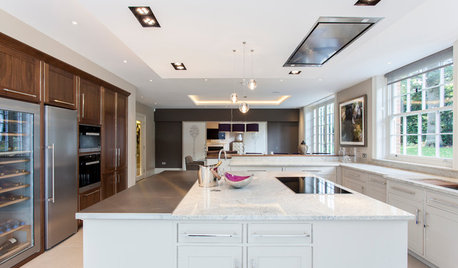
LIGHTINGA Beginner’s Guide to Lighting in Layers
Discover the secrets of combining light sources to create richer-looking and more flexible living spaces
Full Story
GREEN BUILDINGConsidering Concrete Floors? 3 Green-Minded Questions to Ask
Learn what’s in your concrete and about sustainability to make a healthy choice for your home and the earth
Full Story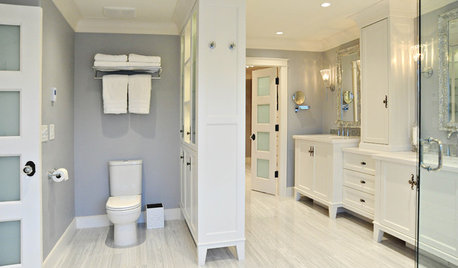
BATHROOM DESIGNBath Remodeling: So, Where to Put the Toilet?
There's a lot to consider: paneling, baseboards, shower door. Before you install the toilet, get situated with these tips
Full Story
REMODELING GUIDESBathroom Workbook: How Much Does a Bathroom Remodel Cost?
Learn what features to expect for $3,000 to $100,000-plus, to help you plan your bathroom remodel
Full Story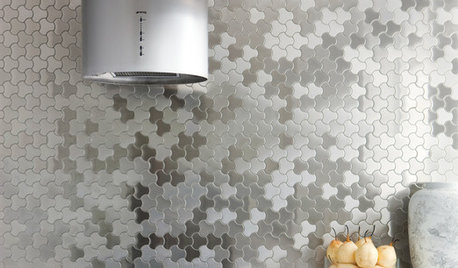
DECORATING GUIDESBling Where It’s Least Expected
Give your interior some sparkle and shine with metal tiles on a backsplash, shower or floor
Full Story
LIGHTING5 Questions to Ask for the Best Room Lighting
Get your overhead, task and accent lighting right for decorative beauty, less eyestrain and a focus exactly where you want
Full Story


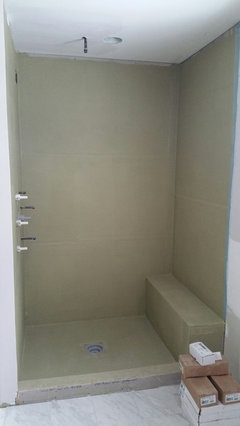


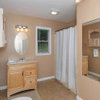
Vith